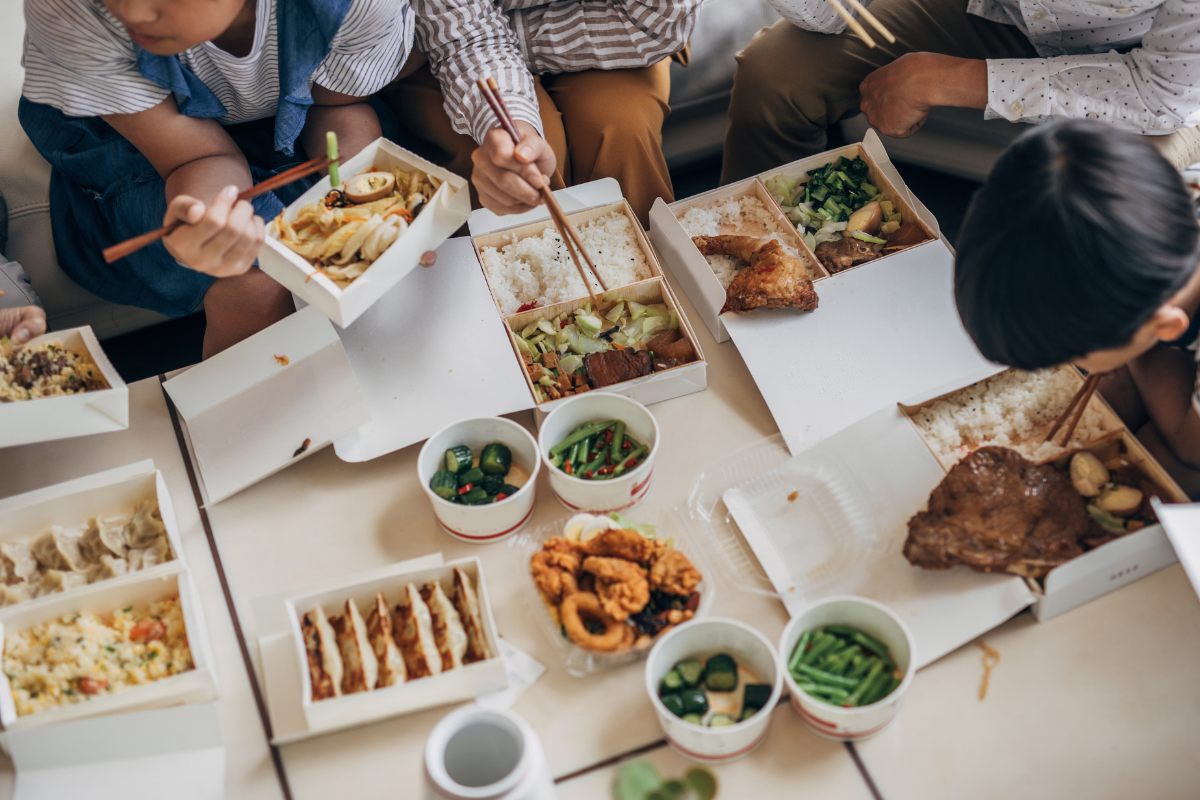Ordering-in now part of Brits' weekly mealtime routine

New research from KAM – in partnership with e-commerce provider Slerp – suggests that the phenomenal growth in demand for “ordering in” seen during the pandemic has resulted in long-term changes to consumer dining behaviour, creating a “new normal” where millions of Brits now order take-away and delivery direct from their favourite hospitality brands as part of their regular weekly routine.
DOWNLOAD FULL RESEARCH E-BOOK HERE
Changing mealtime routines
The research found that 22 million Brits now order a take-away or delivery from a restaurant or pub at least once a week. 34% admit to ordering as part of their regular weekday dining and 62% regularly order-in as a “weekend treat.” Generation Z and young families are ordering-in most frequently.
More like our American neighbours, Brits now take a multi-channel approach to dining, not only eating on-premise but also regularly embracing ‘at-home’ offerings as part of how we feed ourselves and our families. Take-aways and meal delivery is now locked in as an established part of Brits mealtime routine.
Take-aways and deliveries replaces cooking at home
The research found that the majority of online food orders are likely to come from existing customers with 2-in-3 respondents admitting they prefer to order from places that they know and love, with only 30% saying that they actively liked to explore and try new places. And 74% of respondents indicate that they order-in to replace cooking at home, not to replace eating-out occasions.
A concern for many hospitality operators has been the impact that take-aways and home delivery might have on their on-premise operations. Will people order delivery to replace dining out? Reassuringly, it seems the answer is no. Offering take-away and delivery is without a doubt enabling venues to feed their customers on more occasions.
Many consumers prefer to order direct
Despite many consumers still ordering via marketplace apps such as Deliveroo, Just Eat and Uber Eats, 62% said they’d rather order directly from a restaurant or pub, with 1-in-4 consumers saying they expect to download a restaurant/pub-specific app in the future.
And no surprise that the ordering process itself is a key driver of where people are turning for their take-aways and meal deliveries. The online experience will impact physical footfall too with almost half of people (46%) stating that a positive online ordering experience would make them more likely to visit a venue in person.
Loyalty points also have a significant impact on where consumers order: 84% said they’d be more likely to order direct from a restaurant/pub if a loyalty programme was available, and 1/3 stated they’d definitely spend more in order to secure points.
JP Then, Founder, Slerp: “The hospitality sector is facing massive headwinds but there remains opportunity for operators who are listening to customers and embracing an omni-channel approach. The stats don’t lie – d2c combined with loyalty should be part of the proposition as customers want it and they are telling us so.”
Demand for “order-in” must continue to evolve
A year ago, consumer demand was significant with 9-in-10 consumers saying they wanted the restaurant and pub brands which they’d had in their homes during lockdowns to continue offering ‘at-home’ solutions after Covid restrictions lift. That demand hasn’t waned, with 89% saying they have ordered direct via a hospitality’s own website, app or social channels in the past 12 months. KAM suggests in order to capitalise on this cemented demand, operators must not sit still and need to continue to evolve their online offering.
KAM and Slerp have partnered to create a free e-book for operators highlighting the key findings from the research and opportunities to grow their “order-in” sales. Download it here. Or sign up to access all of KAM’s research and insights here.
)
)
)
)
)
)
)
)
)
)
)
)
)
)
)
)
)
)
)
)
)
)
)
)
)
)
)
)
)
)
)
)
)
)
)
)
)
)
)
)
)
)
)
)
)
)
)
)
)
)
)
)
)
)
)
)